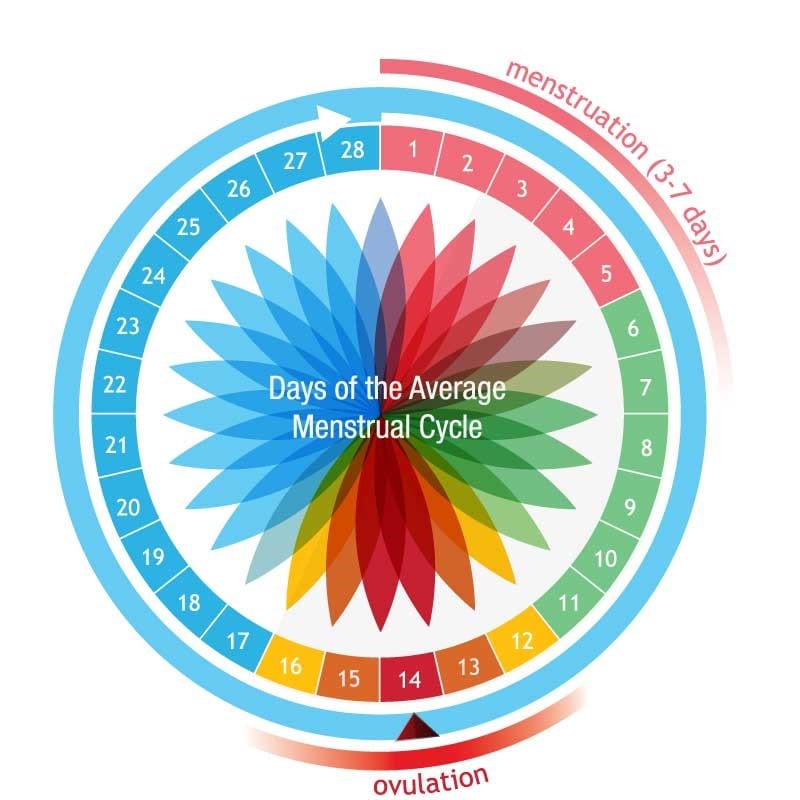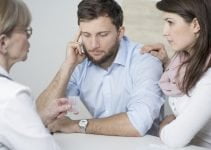Most women bleed for about 12 weeks in a year, and theoretically, any healthy women can get pregnant for more than 400 times in life- as during lifetime, women releases more than 400 eggs.
Since for most couples, desired pregnancies are just one or two during the lifetime, most want to avoid the unplanned event.
Most women and even men want to know about the risk of pregnancy during various stages of the menstrual cycle.
Before coming back to the primary question that can one get pregnant just before or a few days before periods, let’s understand some basics of periods.
Stages of period
Ideally, women should have a period of 28 days, plus and minus two days. However, it is rarely the case. That is why so many questions.
Medically, a range of 21 days to 35 days, is still considered to be healthy. However, if periods are shorter or longer than that, then it is called menstrual irregularity or irregular periods.
The first stage of the cycle is menstruation itself. This occurs when an egg fails to fertilize, and the uterus/womb sheds its thick lining.
It is during this phase that bleeding happens. This phase is also characterized by a fall in estrogens and progestogen levels. This phase lasts for three to seven days.
The second phase starts almost along with the beginning of the period and is called the follicular phase. In this phase, the pituitary gland in the brain releases follicle-stimulating hormone (FSH).
This instructs ovaries to start maturing follicles – eventually, one of these follicles will release the egg. This phase is also characterized by increased release of estrogen and thickening of the lining of the uterus.
The third phase occurs in the middle of the cycle and is called ovulation. It is the time when the egg is released from the follicle. It is the only time when women can get pregnant.
During this time, there is a slight increase in body temperature and also thickening of vaginal discharge.
Ovulation happens in the middle of the cycle – it means on the 14th day if the cycle is of 28 days. And female egg does not survive more than 24 hours without fertilization.
The fourth and final phase of the cycle is called the luteal phase. It is a phase when follicle from which egg has been released changes to corpus luteum and produces human chorionic gonadotropin (hCG) in case of pregnancy.
However, if pregnancy does not occur, levels of estrogen and progesterone start falling, and women feel it in the form of premenstrual syndrome (bloating, headaches, weight gain, mood swings, and so on).
A female egg lives for a day, but the fertility window lasts 6-7 days
Why is it so? Well, a female egg may survive only for about 24 hours, but male sperms can survive for five days in most cases and even up to seven days in some cases. This is the reason that the fertility window lasts 6-7 days.
Just imagine that a woman has a regular cycle, and ovulation occurs on the 14th day of each cycle. It means that women can get pregnant even by having sex on the 9th or 10th day of the cycle.
In the ideal case, this means that the highest risk of pregnancy is between 7 to 15th day of each cycle.
Since menstrual bleeding can last for about seven days or even more, it means that there are some chances of getting pregnant by having sex during the last days of bleeding or period.
Chances of pregnancy keep increasing from the second phase or after 7 days. Chances of pregnancy fall sharply after the 15th of 16th days of the cycle as an unfertilized female egg cannot survive for longer than 24 hours.
This theoretically means that during the third phase of the cycle, the chances of getting pregnant are least. It also means that the safest time for having sex (for those avoiding pregnancy) is just before the expected periods or during the early days of periods.

Figure 1 Ovulation or release of the egg occurs between 12th to 16th day of the cycle. Since sperms can survive for up to seven days thus the real risk of getting pregnant begins from day 6th or the last days of period1 (Image source: Ovulation – Understanding Ovulation Cycles. American Pregnancy Association. April 2012. https://americanpregnancy.org/getting-pregnant/understanding-ovulation/).
Period irregularities are frequent among women
However, things are not that straightforward. Research shows that almost one-third of females do not have regular cycles.
In some cases, they are shorter, in other cases, longer. Some may miss a period; in some cases, they may be completely unpredictable.
Since, at any given time, about one-third of females are living with an irregular or less regular cycle, predicting the fertility window becomes a challenge.
Many women use temperature charts to predict ovulation, along with phone apps or charting. This works quite well for those looking to get pregnant as they can plan sex accordingly.
However, it is of lesser value for those avoiding pregnancy since sperms can survive for about seven days, and this means that having sex even a week before expected ovulation can result in an unwanted pregnancy.
Can you get pregnant 3 days before period?
Theoretically, No. Practically chances are minimum. Though sperms can survive for quite a long in the female body, a female egg cannot.
This means that a few days (or let’s say 3 days) before the period and early days of the period (or menstruation) are the safest ones.
Though the chances of getting pregnant during this phase are close to nil, they are not zero. As already mentioned, many women have hormonal issues and irregular cycles.
It means that in some cases, ovulation may be delayed. In many cases, it is not possible to say that when will those 3 days occur.
For those using a natural method to prevent pregnancy and not using other ways like condoms, pills, and so on, this time is undoubtedly the safest time to enjoy sex with the least risk of pregnancy.
However, do make sure that periods are more or less regular.




 Dr. Preet Pal SB is a physician (M.D. Medicine) with a specialization in diabetes (Fellowship in diabetes, Royal Liverpool Academy). He has a particular interest in metabolic disorders, considering that they are rising in every corner of the world, more so in India.
Dr. Preet Pal SB is a physician (M.D. Medicine) with a specialization in diabetes (Fellowship in diabetes, Royal Liverpool Academy). He has a particular interest in metabolic disorders, considering that they are rising in every corner of the world, more so in India.